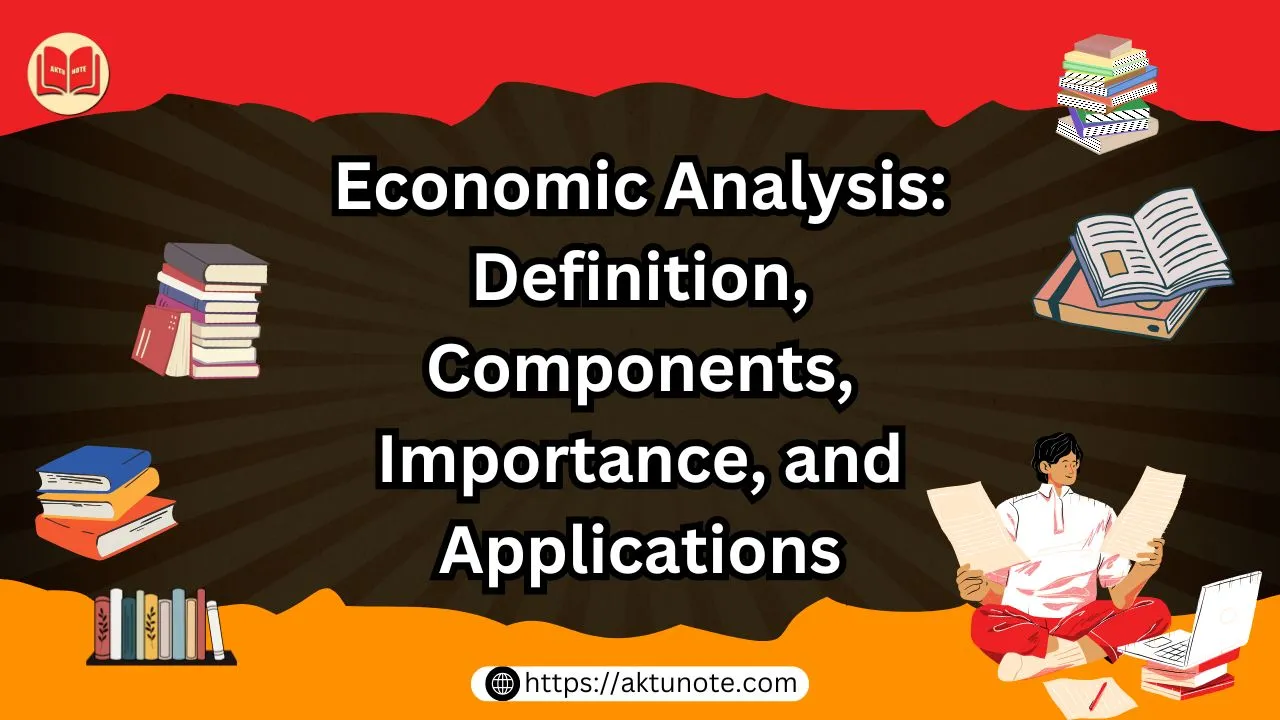Economic analysis is a systematic approach to evaluating the economic viability, impacts, and efficiency of a project, business, policy, or decision. It involves examining costs, benefits, and the broader economic implications to determine whether an initiative aligns with its goals and maximizes value. This tool is integral for decision-makers, helping them allocate resources effectively, assess risks, and make informed choices.
What is Economic Analysis?
Economic analysis is the process of assessing the financial and economic outcomes of decisions, projects, or policies. It evaluates factors like costs, benefits, market conditions, and risks to provide insights into their economic feasibility and potential impact.
Purpose of Economic Analysis
The purpose of economic analysis is to evaluate the economic viability and potential impact of decisions, policies, or projects. It helps determine the allocation of resources, predict outcomes, and assess benefits and costs. By identifying the most efficient and effective options, economic analysis aids in optimizing decision-making and achieving desired economic objectives.
The primary objective of economic analysis is to:
- Determine the viability of a project or decision.
- Maximize resource efficiency.
- Evaluate potential risks and uncertainties.
- Provide a basis for comparing alternatives.
Types of Economic Analysis
Economic analysis can be categorized into microeconomic analysis, which focuses on individual markets, businesses, or households, and macroeconomic analysis, which examines the broader economy, including GDP, inflation, and employment trends. Cost-benefit analysis evaluates the financial feasibility of projects, while input-output analysis studies the flow of resources in an economy. Comparative economic analysis compares different scenarios to determine the best approach.
Economic analysis is classified into various types based on its scope and application:
1. Cost-Benefit Analysis (CBA)
CBA evaluates the total costs versus the total benefits of a project to determine its net value. It is widely used in public policy and business decisions.
- Formula:
Net Benefit = Total Benefits – Total Costs - Example: Assessing the economic feasibility of constructing a new highway.
2. Cost-Effectiveness Analysis (CEA)
CEA compares the costs of different options to achieve the same objective, focusing on the most cost-efficient solution.
- Example: Choosing between two marketing strategies to acquire the maximum number of customers at the lowest cost.
3. Economic Impact Analysis (EIA)
EIA measures the broader economic effects of a project or policy on employment, income, and regional development.
- Example: Evaluating the economic impact of hosting a major sports event on the local economy.
4. Input-Output Analysis
This method examines the interdependencies between industries and how changes in one sector affect others.
- Example: Studying the ripple effects of increased steel production on construction and automobile industries.
5. Sensitivity Analysis
This type assesses how changes in key variables, such as costs or demand, affect the outcomes of a project.
- Example: Evaluating the impact of fluctuating fuel prices on a transportation project.
6. Break-Even Analysis
Break-even analysis determines the point at which revenues equal costs, indicating no profit or loss.
- Example: Analyzing the break-even point for launching a new product.
Key Components of Economic Analysis
The key components of economic analysis include data collection, focusing on relevant economic indicators; cost analysis, examining both direct and indirect costs; benefit analysis, evaluating tangible and intangible gains; and risk assessment, identifying uncertainties. Other components include sensitivity analysis, measuring the impact of variable changes, and forecasting, which predicts future economic trends.
1. Costs
Costs include all expenses incurred in executing a project, decision, or policy. These can be categorized as:
- Direct Costs: Expenses directly related to the project, such as raw materials and labor.
- Indirect Costs: Overhead costs like utilities and administrative expenses.
- Opportunity Costs: The value of the best alternative foregone when choosing a particular course of action.
2. Benefits
Benefits refer to the positive outcomes or value generated by the project. These may include:
- Tangible Benefits: Measurable outcomes like increased revenue or cost savings.
- Intangible Benefits: Non-quantifiable outcomes like improved customer satisfaction or environmental conservation.
3. Risk and Uncertainty
Economic analysis evaluates potential risks and uncertainties, such as market volatility, regulatory changes, or technological obsolescence.
4. Time Value of Money
The analysis considers the time value of money, acknowledging that a dollar today is worth more than a dollar in the future. Tools like Net Present Value (NPV) and Internal Rate of Return (IRR) are used to account for this.
5. Market Conditions
Understanding market dynamics, such as demand, supply, competition, and pricing, is crucial for accurate economic analysis.
6. Environmental and Social Impacts
For large-scale projects, economic analysis may include assessing environmental sustainability and social implications.
Importance of Economic Analysis
Economic analysis is crucial for informed decision-making in both public and private sectors. It helps policymakers and businesses allocate resources efficiently, identify growth opportunities, and evaluate the potential impact of policies or projects. By considering both costs and benefits, economic analysis minimizes risks and ensures that initiatives are economically viable and sustainable.
Economic analysis is indispensable for businesses, governments, and organizations for several reasons:
1. Informed Decision-Making
By evaluating costs, benefits, and risks, economic analysis enables decision-makers to choose options that maximize value.
2. Efficient Resource Allocation
It ensures that resources are directed toward initiatives with the highest potential for economic returns.
3. Risk Management
Economic analysis identifies potential risks and helps develop strategies to mitigate them.
4. Policy Formulation
Governments use economic analysis to design policies that promote economic growth, equity, and sustainability.
5. Investment Appraisal
Businesses rely on economic analysis to evaluate the profitability and feasibility of investments.
6. Enhancing Accountability
Economic analysis provides a transparent framework for assessing the outcomes of decisions, fostering accountability among stakeholders.
Steps in Conducting Economic Analysis
The process begins with defining objectives and scope, followed by data collection and analysis to gather relevant economic indicators. Identifying costs and benefits ensures a comprehensive evaluation of impacts. Next, modeling and forecasting are used to predict outcomes under different scenarios. Finally, the results are compiled into a report, and recommendations are made based on the findings.
1. Define the Scope
Clearly outline the objective, stakeholders, and boundaries of the analysis.
- Example: Determining whether to invest in renewable energy or expand fossil fuel production.
2. Identify Costs and Benefits
List all relevant costs and benefits, both tangible and intangible, over the project’s lifecycle.
3. Gather Data
Collect accurate data on costs, revenues, market conditions, and potential risks.
- Sources:
- Industry reports
- Surveys
- Historical data
4. Choose an Analytical Method
Select the most appropriate economic analysis method, such as CBA, CEA, or break-even analysis.
5. Perform Calculations
Use tools like spreadsheets or specialized software to calculate metrics such as:
- Net Present Value (NPV)
- Benefit-Cost Ratio (BCR)
- Internal Rate of Return (IRR)
6. Evaluate Risks
Conduct sensitivity analysis to assess how changes in key variables affect outcomes.
7. Prepare a Report
Compile findings into a comprehensive report with clear recommendations.
8. Review and Revise
Present the analysis to stakeholders for feedback and refine the recommendations as needed.
Challenges in Economic Analysis
Challenges in economic analysis include data limitations, which can affect accuracy, and uncertainty in market conditions, making predictions difficult. Complex economic interdependencies can complicate analysis, while biases or assumptions may distort results. Addressing these challenges requires robust data, advanced tools, and continuous validation of findings.
1. Data Limitations
Accurate and reliable data may not always be available, leading to incomplete or biased analysis.
- Solution: Use robust data collection methods and validate findings with secondary research.
2. Valuing Intangible Benefits
Assigning monetary value to intangible benefits, such as customer satisfaction or environmental impact, can be challenging.
- Solution: Use proxies or qualitative assessments to estimate these benefits.
3. Uncertainty in Market Conditions
Economic analysis may be affected by unexpected changes in market trends, demand, or regulatory frameworks.
- Solution: Regularly update the analysis to reflect current conditions.
4. Complexity
Large-scale projects with multiple variables can make economic analysis complex and time-consuming.
- Solution: Break down the project into manageable components and prioritize critical factors.
5. Bias in Assumptions
Preconceived notions or overly optimistic assumptions can skew the results.
- Solution: Use objective criteria and involve independent experts to validate assumptions.
Applications of Economic Analysis
Economic analysis is applied in diverse areas, such as policy evaluation, investment planning, market research, and project feasibility studies. It helps in assessing tax reforms, trade policies, and environmental regulations. Businesses use economic analysis for pricing strategies, demand forecasting, and risk management, while governments apply it to budget allocation and infrastructure development.
Economic analysis is applied across various domains:
1. Business Decision-Making
- Evaluating the feasibility of launching new products or services.
- Assessing the profitability of expanding into new markets.
2. Public Policy
- Designing tax policies, welfare programs, or infrastructure projects.
- Analyzing the economic impact of regulations or trade agreements.
3. Environmental Projects
- Assessing the economic benefits of renewable energy projects.
- Evaluating the cost-effectiveness of waste management programs.
4. Healthcare
- Comparing the cost-effectiveness of different medical treatments or interventions.
5. Education
- Evaluating the economic impact of investing in educational programs or facilities.
Examples of Economic Analysis
Notable examples include the economic impact assessment of the Indian Goods and Services Tax (GST), which analyzed its effects on trade and revenue, and the cost-benefit analysis of renewable energy projects, which evaluates financial and environmental gains. These studies highlight how economic analysis informs strategic decisions and supports sustainable development.
1. Feasibility of a Solar Power Plant
A company conducts economic analysis to:
- Compare the costs of solar panels, installation, and maintenance with expected energy savings.
- Assess the environmental benefits of reducing carbon emissions.
2. Public Transport Expansion
A government evaluates the feasibility of expanding a metro rail network by:
- Estimating construction and operational costs.
- Projecting the benefits of reduced traffic congestion and pollution.
3. Launching a New Product
A business performs a cost-benefit analysis to determine whether developing a new product will generate sufficient returns to justify the investment.
Tools for Economic Analysis
Common tools for economic analysis include statistical software like R, Python, and SPSS for data modeling and forecasting. Cost-benefit analysis tools help compare project options, while simulation models predict economic outcomes. Econometric models, input-output models, and decision-support systems are also widely used to analyze complex economic scenarios and derive actionable insights.
Several tools and techniques enhance the accuracy and efficiency of economic analysis:
1. Spreadsheets
Programs like Microsoft Excel are widely used for calculating costs, benefits, and financial metrics.
2. Software Tools
Specialized tools like R, Python, or STATA provide advanced analytical capabilities for complex projects.
3. Decision Trees
Decision trees help visualize potential outcomes and their probabilities.
4. Sensitivity Analysis Tools
Tools like Monte Carlo simulations assess the impact of variable changes on project outcomes.
For More Content Check Out :- KMBN 302
Conclusion
Economic analysis is a cornerstone of effective decision-making, offering a structured framework to evaluate the financial and economic implications of projects, policies, and business strategies. By examining costs, benefits, risks, and market conditions, it provides the insights needed to optimize resource allocation, mitigate risks, and achieve desired outcomes.
While challenges like data limitations and market uncertainties may arise, these can be addressed through robust methodologies, reliable tools, and regular updates. Whether for businesses, governments, or individuals, mastering economic analysis is essential for navigating the complexities of today’s dynamic economic landscape and ensuring sustainable growth and success.

